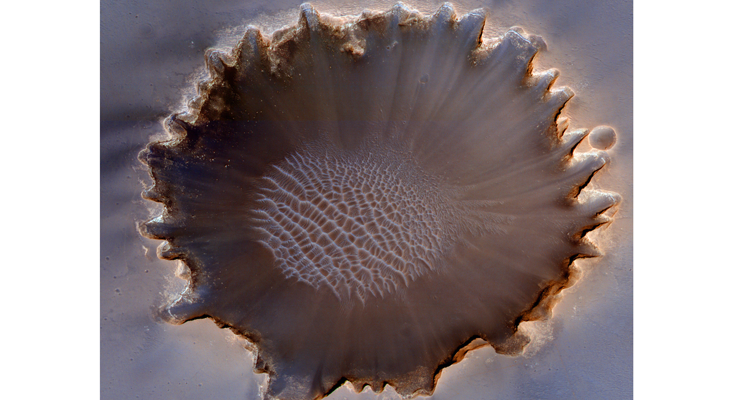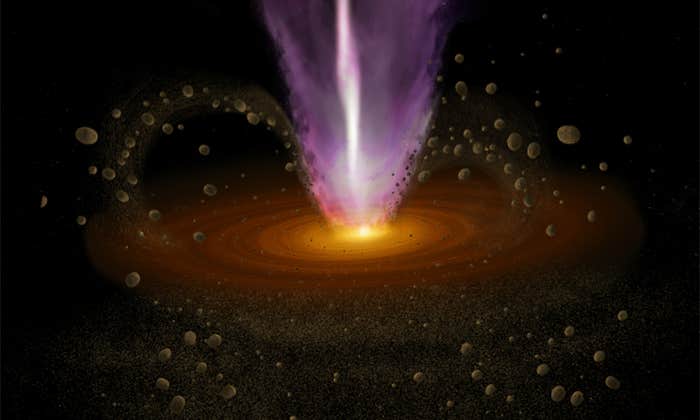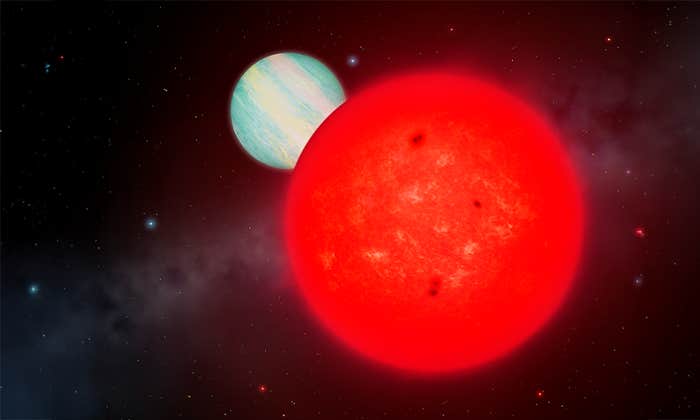These days, when I’ve listened in on strangers’ conversations—all properly socially distanced and discretely of course—I’ve heard several fatigued souls talk about how they’d like to get off this planet, or wish the timeline would correct itself. It’s easy to sympathize, we’re living in a world that feels like it has considerably more risk and dysfunction than it did a mere 12 months ago.
Of course, the idea of jumping ship, or looking for a backup plan, is not new. At the rarified altitudes occupied by billionaires and so-called technological visionaries a perennially favorite discussion topic is about putting metaphorical bunkers down on our planetary sister Mars. Elon Musk is perhaps the most notable and vocal proponent of this option. Indeed, he has been extremely candid about the underlying, big-picture motivations for many of his enterprises. From SpaceX to Starlink, as well as probably Tesla and the Boring Company: It’s all in aid of raising the capital and building the technology to set humans up on Mars for the long haul.1

The basic notion that it’s a good idea to spread the risk inherent to living on any one planet is in itself pretty reasonable. A world like the Earth may have spawned life and the likes of us, but the more we look at the deep history of this hunk of rock and metal the more we see how awfully lucky it’s all been. That isn’t to say that the fundamental phenomenon of life need be unusual when the right chemical and thermodynamic conditions exist—in terms of initiation or origin—but that a whole bunch of other things have to work out for particular flavors of organisms to survive for a long time. A planet capable of harboring life may also always be a planet prone to the slings and arrows of the cosmos, from geophysical upheavals and unstable feedbacks to the indignity of asteroid impacts and worse.
The poster-child for how badly things can go was 250 million years ago when the Great Dying extinguished an astonishing 96 percent of marine species and about 70 percent of land vertebrates in a series of bad-news pulses playing out over tens of thousands, if not millions, of years. The reasons for these dismal episodes? Probably some vast outflows of gas-spewing volcanic basalt, spreading over millions of square kilometers. Possibly too the large-scale combustion of still-relatively-young deposits of flammable coal.2 And maybe the added nudge of a large asteroid impact somewhere in this timeline, all contributing to a wholesale re-sculpting of the environment, placing enormous stresses on organisms that had been going about their business perfectly fine up to this point.
Mars gets hit twice as much as Earth by impacting objects.
Just how good a backup bunker or lockbox is Mars though? We’ve gotten it into our heads that Mars is a quiet, even boring world. When Mariner 4 flew by in 1965 it revealed a dry, dusty, and nearly airless place. Today we don’t think that Mars has any kind of major volcanism or strong tectonic activity. The vast stratovolcanoes on the Tharsis Bulge, including the 25-kilometer high bulk of Olympus Mons, seem to have not been seriously active for at least a few million years, and probably 100 million years. On Earth we study Mars-analog environments like the high Atacama desert or the dry valleys of Antarctica. Locations where it’s easy to imagine dropping off your precious items and finding them preserved a year, a decade, or centuries later.
But the closer we look, the more it’s apparent that Mars is, at best, no less risky a place than Earth. Of course, potentially halving our existential crises by doubling our presence in the solar system is not to be sniffed at, but you have to look at the details. Take for instance the odds of Mars being hit by asteroids. On Earth this seems like one of the greatest long-term hazards; we know that statistically speaking we will be hit by dinosaur-killer, Chicxulub-scale asteroids (at least 10 kilometers across) every 100 million years on average. Smaller, civilization-perturbing objects of say one-kilometer diameter arrive roughly every 600,000 years.
Mars sits in a different solar system environment though. Its proximity to the asteroid belt changes the statistics for asteroid encounters. On the one hand, the relative velocity of impacts on Mars can be a lot less than on Earth because of our higher orbital velocity, larger planetary mass, and objects’ acceleration toward the sun. But while being clobbered by something moving at, say 10 kilometers a second imparts a quarter of the energy compared to something moving at 20 kilometers a second, you’d still rather avoid either. And the really critical figure is that Mars gets hit more often than Earth; on average about twice as much—with variations depending on the size of impacting objects.3 For small objects we’ve already seen this in real time, as our orbital imaging of Mars’ surface has revealed a steady arrival of some 200 crater-forming meteorites per year.4 These are modest, perhaps meter-scale rocks that, thanks to the thin atmosphere, make it all the way to the ground without disintegrating. They’re annoying, but admittedly not likely to wipe out any nascent human civilization on Mars.
But the larger impactors come more often too, making Mars statistically more hazardous than Earth for the kind of events that end a biosphere’s happy run. Of course, there are some caveats: If humans were living in hermetically sealed environments anyway then perturbations to Martian climate or chemistry might not matter that much. And, unlike on Earth, a massive asteroid strike on modern Mars cannot cause biomatter to combust wholesale or disrupt preexisting marine ecosystems.
Nonetheless, it’s hard to argue that Mars is a safe haven from cataclysmic events, which adds to what may be a far more insidious challenge. That challenge is really the combination of many well-known factors, and they sum up to something truly daunting, and rather strange. We’re well aware that living on Mars would be radically different than living on Earth. Radiation hazards are high due to deeply penetrating cosmic rays,5 environmental chemistry is nasty and to be kept at bay, and the lack of a substantial atmosphere forces an existence inside pressure-controlled spaces. On top of those issues, gravitational acceleration on the surface of Mars is a third of that on Earth, and unlike in a spun-up space station you can’t easily compensate for it.
All of these things will place significant stress on any terrestrial organisms, and stress implies—in the long run—a very different fitness landscape for natural selection to play out in. What that means for humans bunkering on Mars is impossible to say for sure. But at the very least it seems likely that after some time Mars-humans would be unlikely to be exactly the same as Earth-humans.
The closer we look, the more it’s apparent that Mars is, at best, no less risky a place than Earth.
Putting all of this together, one would be hard-pressed to call Mars a secure existential hedge-fund. A partial hedge, yes, but definitely not an issue-free backup option for humans, or indeed our surrounding biosphere. Unless we are willing to accept the risk that we’d be, in effect, creating a new version of ourselves, and that this version would have to satisfy our rather fuzzily defined need to extend “humanity” in time and space.
This raises a simple question: Is there a better place or way to do this, given that living on any planet is inherently dangerous and stressful? There could be, but it would require engineering on a scale beyond even that required to set up a human colony on Mars. It would provide an effective Earth-normal gravitational environment, an Earth-normal radiation environment, and—if done carefully—as close a simulacrum of Earth’s chemical and biological stew as possible. It would also, in principle, avoid any kind of large-scale catastrophic disruption such as asteroid impacts or volcanic outbursts.
That solution is, of course, a giant artificial space habitat, or to use the trade-term, something akin to an O’Neill cylinder—after the physicist Gerard O’Neill. This habitat would consist of a vast, spinning environment (to generate mock gravitational acceleration on the interior), perhaps fabricated, or conceivably formed by hollowing out an asteroid. It could be positioned somewhere convenient in the solar system, perhaps in an orbit designed to minimize impact hazards, and it could be entirely self-sufficient—potentially using raw materials from asteroids, including water and minerals.
Not surprisingly there are those in the billionaire-existential-risk-mitigator camp who already have their eyes on this. Most notably Jeff Bezos and the Blue Origin space company, who have extolled the virtues of not just backing up humanity, but of expanding it to a trillion souls living in artificial habitats across the solar system.6 (All presumably also with Amazon Prime.) It’s easy to scoff at this, but I think if we were to be really, truly focused on mitigating existential risk, this would indeed be the path to follow. Especially since, for the same price, we could avoid further perturbing the environment of Earth, and the near-pristine environment of Mars, together with its scientific mysteries yet to be solved.
Caleb Scharf is an astrophysicist, the director of astrobiology at Columbia University in New York, and a founder of yhousenyc.org, an institute that studies human and machine consciousness. His latest book is The Zoomable Universe: An Epic Tour Through Cosmic Scale, from Almost Everything to Nearly Nothing.
Footnotes
1. Elon Musk recently said, on Twitter, that the long-term purpose of his Tesla stock is to help make life multiplanetary, to ensure it continues. “The massive capital needs are in 10 to 20 years. By then, if we’re fortunate, Tesla’s goal of accelerating sustainable energy & autonomy will be mostly accomplished.”
2. National Science Foundation. Volcanic coal-burning in Siberia led to climate change 252 million years ago. nsf.gov/discoveries (2020).
3. Le Feuvre, M. & Wieczorek, M.A. Nonuniform cratering of the Moon and a revised crater chronology of the inner Solar System. Icarus 214, 1-20 (2011).
4. NASA Jet Propulsion Laboratory. NASA probe counts space rock impacts on Mars. jpl.nana.gov/news (2013).
5. Scharf, C.A. Death on Mars. Scientific American blogs.scientificamerican.com (2020).
6. Foer, F. Jeff Bezos’s master plan. The Atlantic (2019).
Lead image: Triff / Shutterstock


























